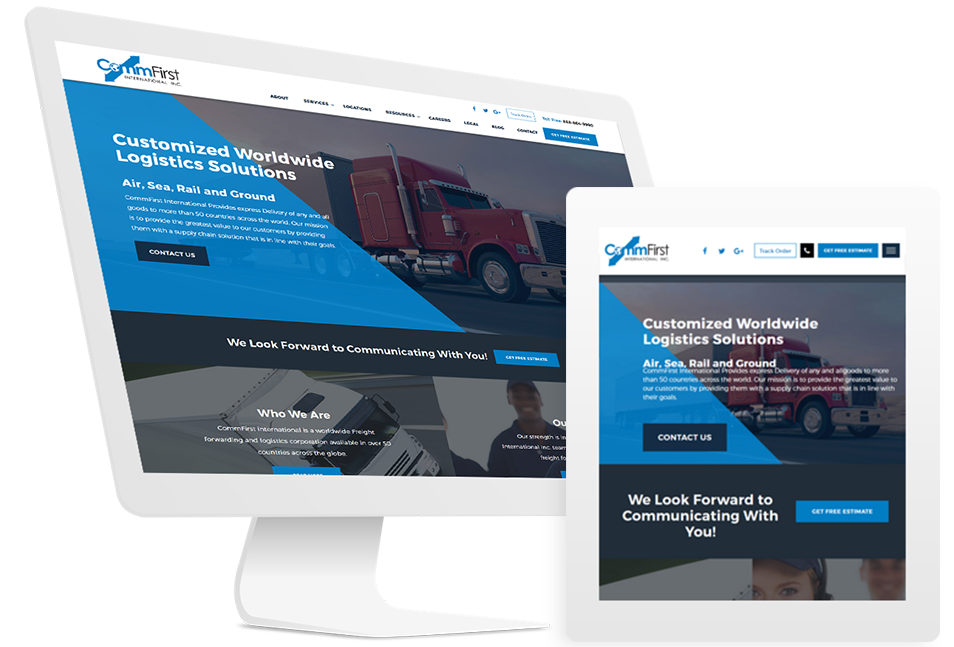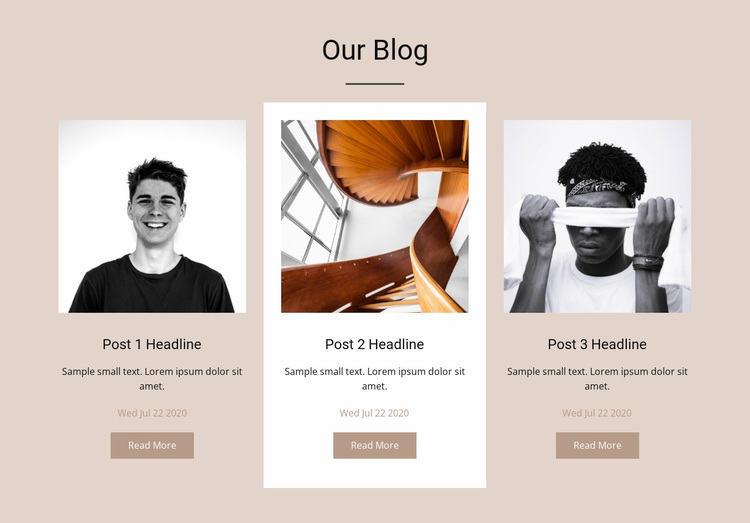Professional Website Design for Businesses Looking to Increase Conversions
Professional Website Design for Businesses Looking to Increase Conversions
Blog Article
Leading Tips for Developing an Impactful Site Style That Transforms
To achieve this, one need to consider a range of variables, including recognizing the target audience, focusing on customer experience, and enhancing for mobile systems. The tactical use of engaging call-to-actions and a well-defined aesthetic hierarchy plays an essential role in guiding individuals with their journey.

Understand Your Target Market
Recognizing your target audience is fundamental to efficient web site design, as it prepares for creating an interesting user experience. Determining who your users are, including their demographics, preferences, and actions, makes it possible for designers to tailor the website's content, format, and functionality to meet specific demands.
Carrying out detailed market research is crucial in this procedure. Surveys, meetings, and analytics can give important understandings into user assumptions and pain factors. By assembling this information, developers can develop customer identities that stand for different segments of the audience, guaranteeing that layout decisions are informed and relevant.
Moreover, recognizing the target audience helps in choosing appropriate design elements such as color design, typography, and images that resonate with customers. A website that speaks straight to its audience cultivates a feeling of connection and trust, urging longer visits and higher conversion rates.
Eventually, a user-centered method to website style not only enhances user complete satisfaction yet additionally sustains organization purposes by driving involvement and commitment. By prioritizing the demands and choices of the target audience, a web site can efficiently offer its function and attain wanted end results.
Prioritize Customer Experience
To enhance the total efficiency of a website, prioritizing user experience (UX) is important (Website Design). A well-designed UX makes sure that visitors can browse the site easily, find info promptly, and involve with content meaningfully. This causes increased user complete satisfaction and greater conversion prices
Begin by implementing instinctive navigation. Menus should be logically structured, enabling users to find vital locations of the website with marginal initiative. Consistency in style components, such as shade plans and font styles, fosters experience, which is crucial for maintaining individual interaction.
Furthermore, think about the filling rate of your site. A hold-up of just a few secs can bring about considerable drop-offs, as customers are much less likely to await a slow-loading web page. Improving images and maximizing code can enhance efficiency and keep visitors.
Moreover, clearness in content presentation is vital. Use succinct, interesting language and separate message with visuals to boost readability. By prioritizing user experience, you not just develop a more delightful setting for site visitors yet also reinforce your brand's credibility. Ultimately, a concentrate on UX is an investment in the long-lasting success of your website.
Enhance for Mobile Gadgets
Maximizing for mobile tools is crucial in today's digital landscape, where an increasing number of individuals access sites through smartphones and tablet computers. A mobile-friendly design not just boosts individual experience however additionally plays a considerable function in enhancing online search engine positions. To attain this, it is necessary to embrace a responsive style that instantly changes to various screen dimensions and positionings.

Packing speed is another crucial aspect; mobile users are generally less individual and anticipate rapid accessibility to information. By prioritizing mobile optimization, you make certain that your website continues to be competitive and properly engages a wider target market.
Use Compelling Call-to-Actions
A web site's performance typically rests on its capability to direct site visitors toward wanted content activities, making compelling call-to-actions (CTAs) necessary components of design. CTAs work as the critical factors that guide individuals to involve with the website, whether that indicates purchasing, registering for a newsletter, or downloading and install a source.
To produce reliable CTAs, quality is paramount. Usage succinct language that clearly interacts the action you want the customer to take. Expressions such as "Start," "Authorize Up Free," or "Store Now" not just share you could try this out necessity but likewise eliminate obscurity. The placement of CTAs is equally essential; they need to be tactically positioned throughout the webpage to ensure they are conveniently visible, particularly in high-traffic locations.
In addition, the style of CTAs should stand apart without being noticeable. Utilize contrasting colors and clear fonts to guarantee they capture focus. Furthermore, consider making use of directional cues, such as arrows or images, to direct customers toward these switches. By focusing on these components, companies can substantially boost individual engagement, driving conversions and eventually accomplishing their web site's objectives.
Concentrate On Visual Pecking Order
Effective web site layout counts greatly on a well-structured aesthetic pecking order that guides individuals via material flawlessly. By arranging aspects in a manner that focuses on info, designers can boost user experience and assist in decision-making. This involves making use of size, color, comparison, and spacing purposefully to draw attention to the most vital elements of a page.
Making use of larger font styles for headings and subheadings establishes a clear difference in between various areas, allowing customers to scan content easily. Furthermore, utilizing different shades for buttons and calls-to-action can capture customer focus and encourage interaction. Whitespace is an additional important part; it prevents clutter and makes it possible for users to focus on essential messages without distractions.
Photos and graphics must complement the text while likewise adhering to the well established power structure, strengthening the total message (Website Design). Uniformity in layout elements, such as color design and typography, additional enhances the aesthetic Visit This Link pecking order, making navigating user-friendly

Verdict
In final thought, efficient web site style requires a thorough understanding of the target audience, prioritization of individual experience, and mobile optimization. Eventually, a well-executed internet site layout serves as an essential part in driving customer activities and achieving company purposes.
Report this page